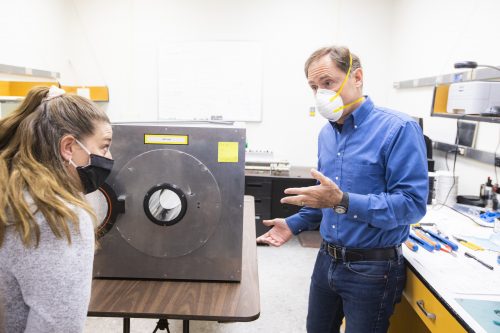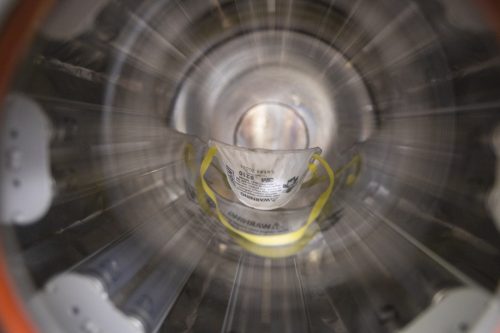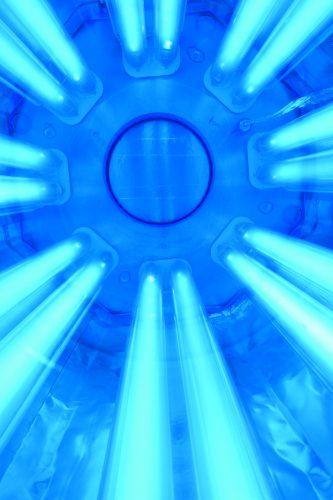New UAF-designed device sanitizes masks for first responders
August 20, 2020
LJ Evans
907-474-2737

Ultraviolet light stops many pathogens in their tracks, a fact known for decades. Jeff Rothman has an old light box with a bank of long-wave UV bulbs he formerly used for making printed circuit boards. He recently thought of a new use for it during the COVID-19 pandemic.
“I use N95 respirators (N95 masks) in my work, so I had a small supply to experiment with,” said Rothman, manager of the Electronics Shop at the University of Alaska Fairbanks Geophysical Institute. “There were others, particularly first responders, who were going to need them. I wondered if I could use that light box to disinfect and reuse the respirators.”
“Given the shortage of respirators, I could see there was going to be a problem,” Rothman said.
The light box he had was impractical, though. It did not have the necessary safety features. Also, the UV tubes were only on one side, so masks wouldn't be evenly exposed on all surfaces. Rothman set out to design a better light box, one specifically for disinfecting face masks so they could safely be reused.
UV light is a part of the electromagnetic spectrum that falls in the region between visible light and X-rays. UV light damages living cells — that's the element of sunlight that causes sunburn, so it should only be used on objects or surfaces. UV light falls into several categories; UVC is the bandwidth used for disinfection. UVC radiation warps the structure of genetic material in virus particles and prevents them from replicating themselves.

Rothman’s design is an aluminum box with 16 germicidal UVC light tubes inside. The tubes surround a clear fused quartz tube in the middle of the chamber. He used quartz for the tube because it is transparent to UVC radiation; ordinary glass would block it. The unit has door openings on opposing sides of the box, which is about the size of a big fish smoker. The GI Machine Shop worked closely with him to fabricate the units and refine details.
To use it, you put a mask in from the “dirty” side, close the doors and turn on the UV lights for a specific length of time. In order to ensure cleanliness, someone else on the “clean” side takes the mask out and places it in a clean plastic bag to be returned to the person who had been using it.

On Aug. 5, 2020, Rothman delivered a disinfection unit to the Fairbanks Correctional Center. This was the second unit they’ve produced; the first went to the Fairbanks Pioneer Home the week before. They have funding to make eight more.
He is working with the Fairbanks Area Citizens Corps, part of the Fairbanks COVID-19 Unified Command, to distribute the rest to first responders in Fairbanks.
Funding for production of the sanitizers came from the Office of Naval Research, through UAF's Alaska Center for Innovation, Commercialization and Entrepreneurship, or Center ICE. The ONR redirected funding from other projects to solicit novel solutions to COVID-19 problems.
Four University of Alaska research teams, including Rothman's project, received grants totaling more than $64,000 to develop innovative concepts for fighting the COVID-19 pandemic.


